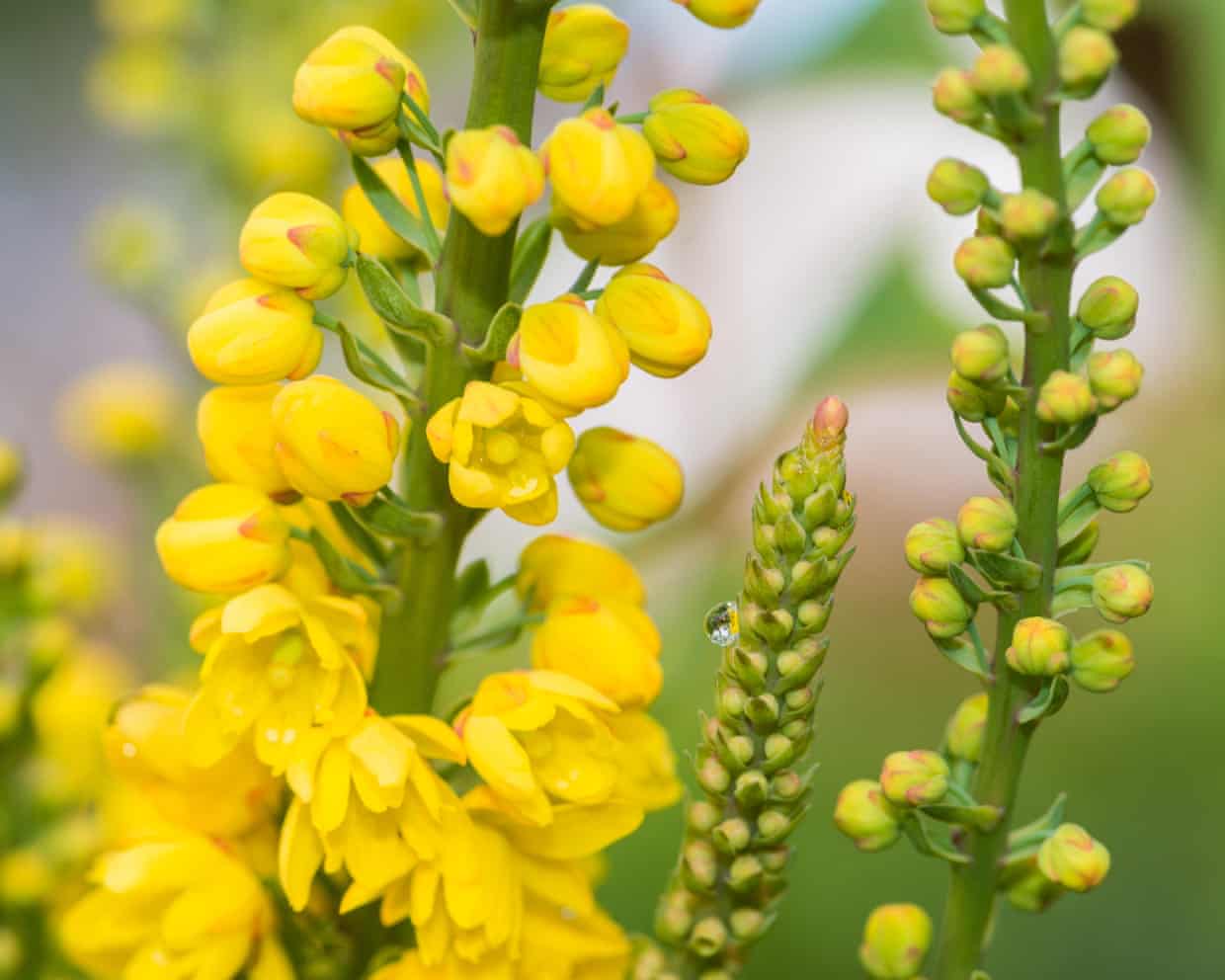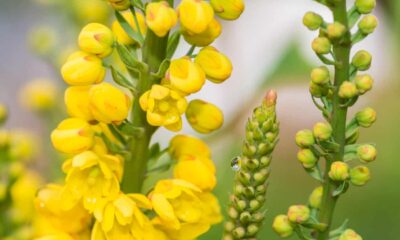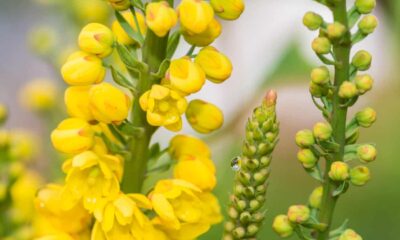Science
Flowers Deploy Unique Strategies to Enhance Pollination Efficiency

Recent studies have unveiled the fascinating ways in which flowers optimize their reproductive strategies through unique adaptations. Specifically, the male reproductive parts of flowers, known as stamens, employ a variety of touch-sensitive movements that enhance pollination efficiency. These mechanisms involve intricate interactions with visiting insects, which play a crucial role in the transfer of pollen from one flower to another.
Many plant species, including Berberis and Mahonia, have developed a strategy where their stamens act almost like a defense mechanism. When an insect lands to feed on nectar, the stamens bend and quickly release pollen, smothering the insect’s face or tongue. This unexpected encounter tends to startle the insect, resulting in a brief visit to the flower. Consequently, the flower conserves its valuable resources, ensuring that its nectar and pollen are not wasted.
Once the insect moves on, it carries the pollen to another flower, where it may brush against the receptive female parts, facilitating cross-pollination. This intricate dance of attraction and defense ensures that flowers can efficiently reproduce while minimizing resource expenditure.
Violent Reception for Orchid Visitors
The Catasetum orchid takes a more aggressive approach. In a bid to ensure effective pollen transfer, these flowers have evolved a method that delivers a forceful greeting to unwary insects. When an insect lands on the Catasetum, it can be struck by a pair of sticky pollen bags that are ejected at high speed. This rapid discharge can knock the insect out of the flower, leaving it with the pollen bags attached to its body. This method not only ensures that the insect carries pollen away but also increases the chances of successful pollination when it visits other flowers.
Triggerplants Exhibit Lightning-Fast Movements
Perhaps one of the most remarkable adaptations belongs to the triggerplants (genus Stylidium), native to Australia. These flowers have club-shaped reproductive organs that react incredibly quickly. When touched, the club swings through an impressive 180 degrees in approximately 10 milliseconds, delivering a swift blow of pollen to the visiting insect. Simultaneously, it is also able to receive any pollen that the insect may already be carrying. Once the interaction is complete, the trigger resets, ready for the next visitor.
These diverse strategies highlight the intricate relationships between flowers and their pollinators. By adapting their reproductive mechanisms, plants enhance their chances of successful cross-pollination, leading to greater genetic diversity and improved resilience in changing environments. The study of these interactions not only expands our understanding of plant biology but also emphasizes the critical role that pollinators play in sustaining ecosystems.
As researchers continue to explore these remarkable adaptations, the findings underscore the importance of conserving both plant species and their insect partners, ensuring the continued health of our natural world.
-

 World3 months ago
World3 months agoScientists Unearth Ancient Antarctic Ice to Unlock Climate Secrets
-

 Entertainment3 months ago
Entertainment3 months agoTrump and McCormick to Announce $70 Billion Energy Investments
-

 Science3 months ago
Science3 months agoFour Astronauts Return to Earth After International Space Station Mission
-

 Lifestyle3 months ago
Lifestyle3 months agoTransLink Launches Food Truck Program to Boost Revenue in Vancouver
-

 Technology2 months ago
Technology2 months agoApple Notes Enhances Functionality with Markdown Support in macOS 26
-

 Top Stories1 week ago
Top Stories1 week agoUrgent Update: Fatal Crash on Highway 99 Claims Life of Pitt Meadows Man
-

 Sports3 months ago
Sports3 months agoSearch Underway for Missing Hunter Amid Hokkaido Bear Emergency
-

 Politics2 months ago
Politics2 months agoUkrainian Tennis Star Elina Svitolina Faces Death Threats Online
-

 Technology3 months ago
Technology3 months agoFrosthaven Launches Early Access on July 31, 2025
-

 Politics3 months ago
Politics3 months agoCarney Engages First Nations Leaders at Development Law Summit
-

 Entertainment3 months ago
Entertainment3 months agoCalgary Theatre Troupe Revives Magic at Winnipeg Fringe Festival
-

 Politics1 week ago
Politics1 week agoShutdown Reflects Democratic Struggles Amid Economic Concerns













